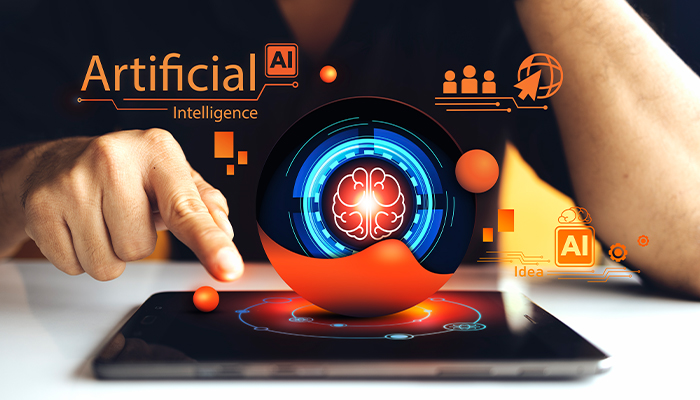How Much Does it Cost to Develop an AI Testing Tool like Katalon?

FEB, 6, 2024 15:10 PM
How Much Does it Cost to Develop an AI Testing Tool like Katalon?
As the demand for software applications continues to grow, so does the need for effective testing tools that can ensure the reliability and quality of these applications. With the rise of artificial intelligence (AI), testing tools are evolving to incorporate intelligent features that enhance efficiency and accuracy.
Katalon, a popular AI testing tool, has set a benchmark in the industry. However, many organizations and developers are curious about the costs associated with developing a similar AI testing tool. In this comprehensive guide, we will explore the key factors that contribute to the cost of developing an AI testing tool like Katalon.
Understanding the Landscape of AI Testing Tools:
Before delving into the costs, it's crucial to understand the landscape of AI testing tools and their significance in the software development life cycle. AI testing tools leverage machine learning algorithms, natural language processing, and other AI techniques to automate and optimize various aspects of software testing. These tools can perform tasks such as test case generation, test execution, defect identification, and more.
Katalon, a leading AI testing tool, offers a range of features like cross-browser testing, data-driven testing, and integration with popular CI/CD tools. The development of such a tool involves a combination of expertise in software development, AI, and quality assurance.
Factors Influencing the Cost:

Scope and Complexity of Features: The scope and complexity of features play a significant role in determining the cost of developing an AI testing tool. Katalon, for instance, offers a wide array of features like web and mobile testing, API testing, and smart test analytics. Defining the features and functionalities your tool will incorporate will directly impact development costs.
Technology Stack: The choice of technology stack is a crucial decision in the development process. The selection of programming languages, frameworks, and libraries can influence the overall development time and cost. Additionally, compatibility with different platforms and devices may require additional resources.
AI Algorithms and Models: The heart of an AI testing tool lies in its intelligent algorithms and models. Developing and implementing machine learning algorithms for tasks such as test case generation, predictive analytics, and self-healing tests requires specialized expertise. The complexity and sophistication of these algorithms can impact both development time and costs.
User Interface and Experience: A user-friendly interface is essential for any testing tool. The design, usability, and overall user experience contribute to the tool's adoption and effectiveness. Investing in user interface (UI) and user experience (UX) design can add to the development costs but is crucial for the tool's success.
Integration Capabilities: Seamless integration with other tools and platforms is vital for a testing tool's effectiveness in a real-world development environment. If your AI testing tool needs to integrate with popular CI/CD tools, issue tracking systems, or communication platforms, the development effort and costs may increase.
Testing and Quality Assurance: Given that the tool is designed for testing, rigorous testing and quality assurance processes are essential. This includes testing the tool against various scenarios, ensuring compatibility with different environments, and validating the accuracy of AI-driven features. The cost of testing and quality assurance should not be underestimated.
Scalability and Maintenance: Building a robust and scalable architecture is crucial for accommodating future updates and an increasing user base. Ongoing maintenance, updates, and support also contribute to the overall cost of developing and maintaining the AI testing tool over time.
Regulatory Compliance: Depending on the industry and regions where the tool will be used, compliance with regulatory standards may be necessary. Ensuring that the AI testing tool adheres to relevant regulations can add complexity to the development process and increase costs.
Cost Breakdown:
Development Team: The development team is a significant contributor to the cost. The team may include software developers, AI specialists, UI/UX designers, and quality assurance professionals. The size and expertise of the team will directly impact the overall development cost.
Technology Infrastructure: The infrastructure required for development, including hardware, software licenses, and development tools, contributes to the cost. Cloud services, such as AWS or Azure, may be utilized, and their usage can be a variable cost depending on the development and testing requirements.
Third-Party Services: Utilizing third-party services for specific functionalities, such as AI algorithms, analytics, or cloud-based testing services, can affect costs. Licensing fees for proprietary technologies or services should be considered in the budget.
Training and Skill Development: If your team lacks expertise in certain areas crucial for the development of an AI testing tool, budgeting for training or hiring specialists is essential. This includes AI training, learning new programming languages, or gaining proficiency in specific frameworks.
Legal and Compliance: Legal considerations, including intellectual property rights, licensing agreements, and compliance with data protection regulations, should be factored into the budget. Consulting with legal experts to ensure the tool's compliance can prevent legal issues in the future.
Marketing and Launch: Introducing the AI testing tool to the market involves marketing efforts, creating documentation, and possibly conducting training sessions. Allocating a budget for marketing and launch activities is essential for promoting the tool and attracting users.
Strategies to Optimize Costs and Ensure Success:
Understanding the potential costs involved in developing an AI testing tool is crucial, but it's equally important to strategize for cost optimization and project success. Here are some strategies to help you navigate the development process efficiently:
Prioritize Features: Clearly define and prioritize the features of your AI testing tool. Identify the core functionalities that align with your target users' needs and focus on developing those first. This approach allows for a more streamlined development process and helps control costs.
Agile Development Methodology: Implementing an Agile development methodology can enhance flexibility and responsiveness to changing requirements. Break down the development process into smaller, manageable sprints, allowing for iterative development and continuous feedback. This approach minimizes the risk of costly last-minute changes.
Open Source Technologies: Consider leveraging open-source technologies and frameworks to reduce licensing costs. Open-source tools often have a strong community and can provide a solid foundation for your development. However, be mindful of any limitations or potential challenges associated with using open-source solutions.
Outsourcing and Collaboration: Explore the option of outsourcing specific tasks or collaborating with external experts. This can be a cost-effective way to access specialized skills without the need for long-term commitments. Ensure clear communication and a well-defined scope of work to mitigate potential risks.
Continuous Monitoring and Optimization: Implement continuous monitoring and optimization practices throughout the development lifecycle. Regularly assess the project's progress, identify areas for improvement, and adjust the strategy accordingly. This proactive approach helps prevent cost overruns and ensures a more efficient development process.
Prototype and MVP Development: Consider developing a prototype or minimum viable product (MVP) to test the market and gather feedback early in the development process. This approach allows you to validate essential features and make informed decisions about further development, potentially saving costs by avoiding unnecessary functionalities.
Training and Skill Development: Invest in the training and skill development of your internal team. Building a knowledgeable and skilled in-house team can reduce dependency on external resources and long-term costs. Encourage ongoing learning and stay updated on the latest advancements in AI and testing technologies.
Risk Management: Conduct a thorough risk analysis at the beginning of the project to identify potential challenges and uncertainties. Develop mitigation strategies for high-risk areas to minimize the impact on the project timeline and budget. Being proactive in risk management can contribute to a more predictable and successful development process.
Community Engagement: Engage with the developer and testing communities to stay informed about the latest trends, tools, and best practices. Participate in forums, conferences, and online discussions to gain valuable insights and potentially discover collaborative opportunities. Community engagement can provide a support network and contribute to cost-effective problem-solving.
Flexible Scalability: Design the architecture of your AI testing tool with scalability in mind. Ensure that the system can efficiently scale up or down based on user demand. This flexibility allows you to adapt to changing requirements without incurring significant redevelopment costs.
Conclusion
Developing an AI testing tool like Katalon involves a multidimensional approach, considering various technical, organizational, and regulatory aspects. While the costs can vary significantly based on the factors discussed, it's essential to view the investment as a strategic one that can yield long-term benefits in terms of improved testing efficiency, software quality, and overall development productivity.
By carefully assessing the specific requirements, understanding the landscape of AI testing tools, and making informed decisions throughout the development process, organizations can embark on a successful journey to create a powerful and competitive AI testing tool. While the costs may seem substantial, the potential returns in terms of improved software quality and streamlined development processes can make the investment worthwhile in the rapidly evolving landscape of software development and testing.
Strategy
Design
Blockchain Solution
Development
Launching
Testing
Maintenance
Contact US!
India

Plot 378-379, Udyog Vihar Phase 4 Rd, near nokia building, Electronic City, Phase IV, Sector 19, Gurugram, Haryana 122015
Copyright © 2025 PerfectionGeeks Technologies | All Rights Reserved | Policy
Contact US!
India 
Plot 378-379, Udyog Vihar Phase 4 Rd, near nokia building, Electronic City, Phase IV, Sector 19, Gurugram, Haryana 122015
Copyright © 2025 PerfectionGeeks Technologies | All Rights Reserved | Policy





